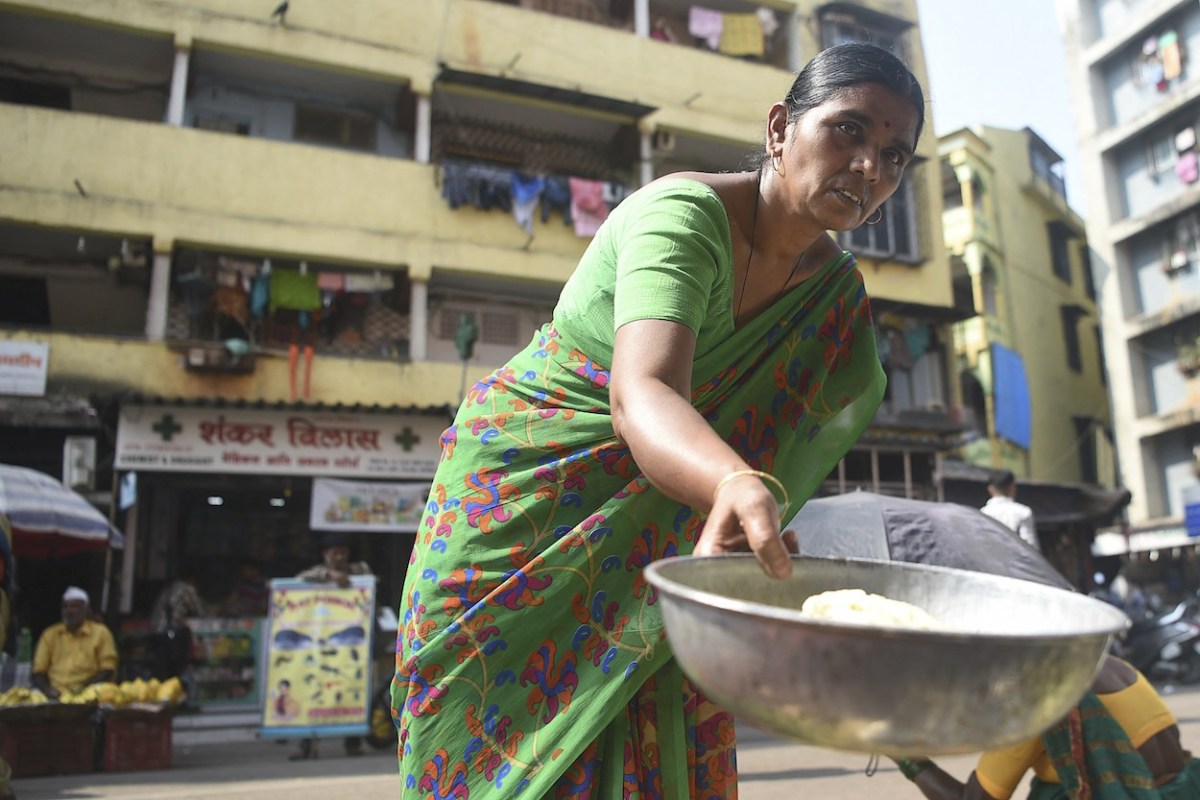[ad_1]
In India, the labor of millions of women domestic workers is not recognized, depriving them of labor rights, formal terms of employment, and respect.
Official government records estimate a conservative figure of 3.9 million domestic workers in the country (2.6 million of whom are women). A report in the Economic and Political Weekly, however, puts the number of domestic workers much higher, at more than 50 million domestic workers, with women making up more than 75% of the workforce in this sector.
Bangalore, the capital of the southern state of Karnataka, has an estimated 400,000 domestic workers. They constitute a large proportion of the city’s workforce, and yet they still lack fundamental rights, a fact that has become even more apparent since the start of the pandemic.
In this sense, it is not surprising that the life of a domestic worker is not an easy one, with or without a hovering pandemic.
Kajita, 28, and Noor, 45, are migrant workers from West Bengal. Living 2,000 kilometers away from home, they dwell in a slum in east Bangalore’s Thubarahalli area – hidden by the rising apartments in an upscale locality that connects the two major IT centers, Marathahalli and Whitefield.
India’s migrant workers, who move from rural to urban areas in search of gainful employment, take a big share of the burden of household income onto their shoulders – most of them send a major part of their income to their families in the villages for their sustenance. They live in cramped shanties of tarpaulins and tin in a sprawling city of soaring expenses and expanse.
Before the countrywide lockdown was announced in March 2020, Kajita would start her day at 4:45am and return home after 9pm. She would work for more than 15 hours a day in 10 households. Noor would go to work at 5:45am and return around 6:30pm. She used to work in four households – eight hours in one household and then dividing the rest of her time working in other houses.Â
Their work includes but is not limited to sweeping, cleaning, cooking, washing dishes and clothes, and child and elderly care.
While they take the heavy burden of physical work, their work is far from being recognized. The household chores have been historically seen as tasks that women are supposed to perform without asking for any remuneration.
The United Nations has highlighted the lack of public acceptance to consider a household as a place of work – resulting in non-recognition of women’s labor at a household as work.
The UN also points out that India lacks comprehensive national legislation that would guarantee formal terms of employment, including minimum wage and decent working conditions, to the domestic workers. They are often left at the mercy of their employers without having access to any social and economic benefits from the state.
Speaking up about their day-to-day exploitations often could mean threats, intimidation and violence. Weekly days off, time off for holidays, or annual paid leave is a privilege most domestic workers are deprived of. Instead, in many cases, during the festival days, their work increases exponentially.
Kajita’s and Noor’s incomes come from their devalued, hard physical labor. Their income was just about enough to support themselves and their families before the announcement of a lockdown in India.
While a younger worker like Kajita might take up work in about a dozen houses to supplement her income, older workers like Noor typically take up an eight- or 12-hour job with one household and try to earn a major part of their income from there.
The income they earned throughout a decade of work was neither sufficient to lift their standard of living, nor could it ensure them a “healthy and safe stay at home†during the pandemic.
Once the lockdown began in India, Kajita and Noor and other domestic workers found themselves without work for more than four months.
One of Kajita’s employers paid her the first two months of the salary during the initial phase of the lockdown, while the others refused to pay her during the lockdown. She lost around 90% of her monthly income for several months. Noor was paid half the amount of her salary for the first two months of the lockdown.
Kajita now earns 7,000 rupees (US$96) per month – a sharp decline in her income by more than 70% from 30,000 rupees ($413) a month that she earned before the lockdown; and Noor earns 11,500 rupees – her salary declined by almost 50% from 20,000 rupees a month.
Household expenditure, however, did not fall with the falling income. In fact, it increased as a proportion of income. Kajita and Noor each had to pay 2,500 rupees as the rent for their shanties and electricity bills even during the lockdown. They still had to buy a 20-liter can of drinking water for 25 rupees – in the absence of access to clean drinking water in the slum area where they live – along with other essential items.
Noor told me last October, “What we received [as a food kit from some organizations such as the Centre of Indian Trade Unions and Bharat Gyan Vigyan Samiti] for one month, we survived on [it] for more than two months. Since the lockdown, our life has changed. We have no income, but we continued to spend.â€
Kajita said, “We [Kajita’s younger brother and sister] shared one meal three times a day. We have never seen [this kind of misery] earlier.â€
Challenges in their lives escalated by the pandemic only revealed the grim picture about the conditions of India’s vast section of domestic workers. With a pandemic and lockdown, they lost their jobs. A battle for economic rights is a far-fetched dream if social rights are not ensured simultaneously.
The stories of domestic workers like Meena and Nilam (names changed) speak of the cruelty involved in the lives of these workers; they enjoy little dignity and respect – and are often subjected to violence.
S Selvi, the general secretary of a domestic workers’ union in Bangalore affiliated with the Centre of Indian Trade Unions (CITU), began her journey of working with domestic workers in 2012.
In her experience, the most common threats of violence surface when a domestic worker asks for a pay raise – or refuses to perform tasks other than the ones agreed in verbal negotiations at the time of joining – or when a worker resists sexual abuse by the male employer.
Intimidated by the threat that an employer could file a theft report with the police against them (even if they are innocent), most domestic workers tend to suppress their voice. They fear losing their job; they fear actions against them or their families by employers. Therefore, in most cases, they avoid registering any complaint.
Selvi told me about the case of Meena, who was employed by a man in north Bangalore. She said, “The employer used to torture and sexually assault her. When she opposed, the employer beat her. Her body was marked with burn wounds from cigarette-butt stubbing. He used to torture her so much so that she had to be finally hospitalized.
“In another case, in north Bangalore,†she told me, “the employers filed a police complaint against a worker, Nilam, alleging theft. She was innocent. The complaint was an insult for her; she could not take the blame, and she attempted suicide.â€
With the intervention of the union, both Meena and Nilam were rescued. Selvi emphasized, “In [these] situations, organizations [such as the] All India Democratic Women’s Association (AIDWA) play an important role in giving confidence to the victim and motivating her to register a complaint.â€
The continual battle by unions and organizations to safeguard the rights and lives of domestic workers has pushed the central government at least to introduce the Domestic Workers (Regulation of Work and Social Security) Bill, 2017. The formation of a “national policyâ€Â for safeguarding the interests of domestic workers has been pending for several years.
However, the challenges in their lives are not pending – they do not vanish, with or without a pandemic. Not only is their labor unseen, but they are also seen as less human. This mindset and the inhuman practices need an upfront battle to resolve domestic workers’ everyday distress and to advance their standards of living.
This article was produced by Globetrotter, which provided it to Asia Times.
[ad_2]
Source link














